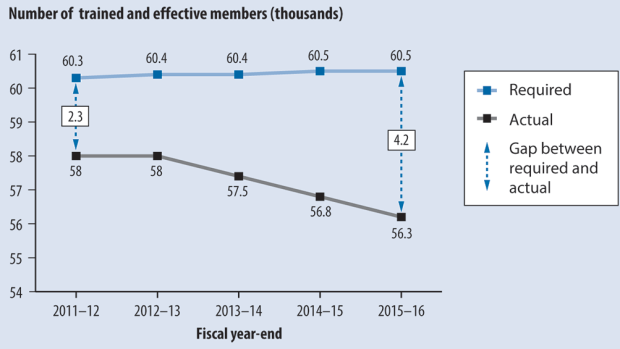The Canadian Armed Forces have an authorized strength of more than 60,000, but have not been close to that level for several years: as of 2016 there were barely more than 56,000. Recruiting has not kept pace with the demand:
Canada’s armed forces have struggled for years to attract and retain talent. The latest reports only highlight the growing gulf between the number of members required for a fully staffed service, and the lack of actual personnel.
On May 7, Procurement Canada published an expression of interest notice asking the film and television industry to help boost the military’s brand among millennials and young Canadians.
The document ascribes young people’s apparent lack of interest in joining the military to a shift in generational attitudes.
“Millennials rank inward-focused values – happiness, discovery, etc. – higher than collective-focused values – justice, duty, etc.,” the report says.
“Characteristically, they want to contribute to society in a way that is meaningful as viewed in their own standards.”
Membership in the Canadian Armed Forces (CAF) fell from 58,000 to 56,300 between 2011 and 2016, while the forces’ staffing requirements actually grew.
The shortfall in personnel by the end of 2016 measured 4,200 jobs – nearly twice the vacancy gap of four years prior – with no evidence of a reversal of fortunes since.
A fascinating statistic popped up in the coverage that I hadn’t seen before:
The callout also targets celebrity personalities, influencers, podcasts and video games as potential vehicles for pro-military narratives, and stresses the importance of attracting visible minorities “as they account for 51 per cent of all science, technology, engineering and math (STEM) degrees and account for 50 per cent of the doctorate holders in Canada.”
According to the 2016 Census (summarized by Wikipedia), the national average of visible minorities is 22%, so that 22% is disproportionally represented in the graduating classes in STEM programs.
H/T to my friend William for the link.




